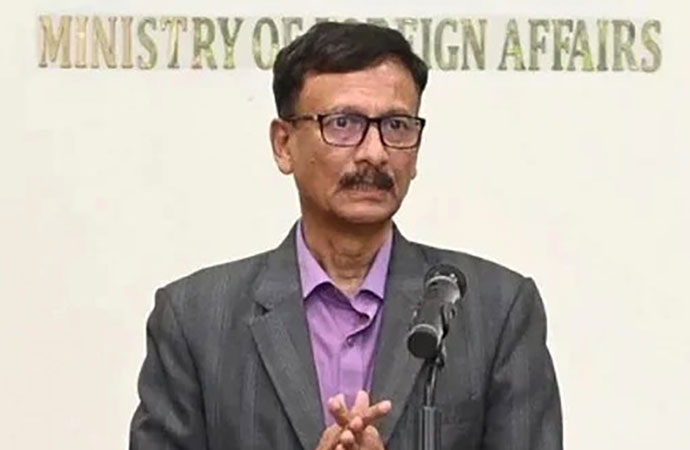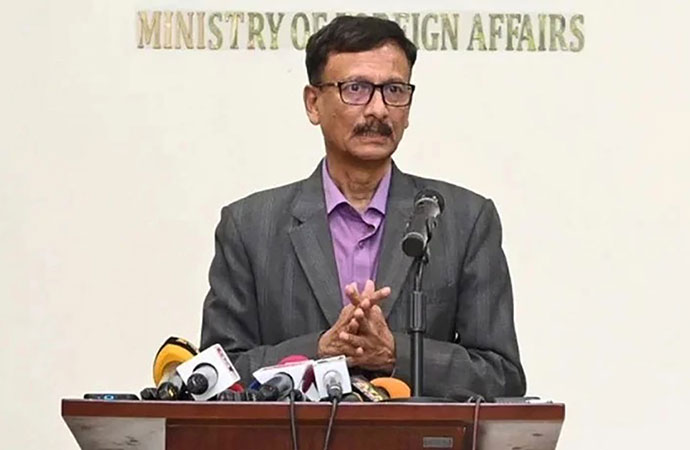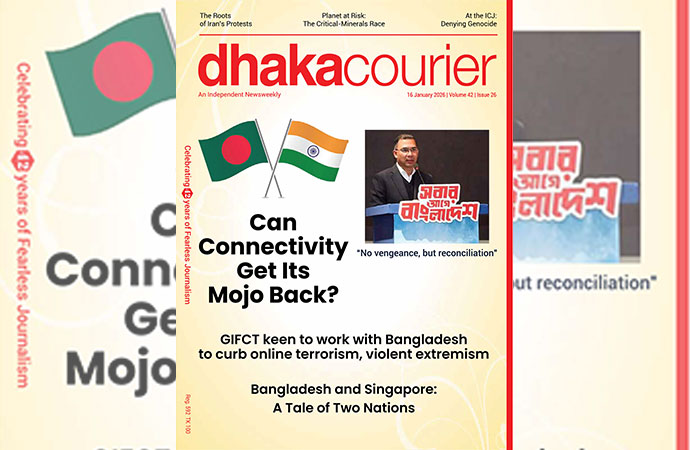Featured 2

Members of the Kapot community demonstrate against the government’s environmental policies. Photo: Pablo Albarenga
As agribusiness, a slow legal system and Bolsonaro’s policies threaten lands, Indigenous peoples are fighting back
"Deni Farm, owner Edilson Pereira Duarte"; "Mato Grosso Farm, owner Vanderlei Martins de Oliveira". These two signs, incorporating the Brazilian flag, are nailed to trees on either side of the road leading to Kapot village, in the Capoto/Jarina Indigenous Land, northern Mato Grosso state.
A barrier spans the road leading into Kapot. Drivers must get out of their vehicles and lift it to proceed, in contradiction to the legal requirement that access to Indigenous territory should be free and unhindered.
The signs and the barrier send a clear message. This land is private property and the law is not respected in these parts. Drones have shown that a plot of land in the area is already being cleared of trees. Will it join the gigantic soya or maize plantations that are advancing unchecked over these areas of tropical forest?
According to data from 2021, in the state of Mato Grosso, soya occupies some 9.8 million hectares and maize some 5.1 million hectares, a combined area equivalent to half the size of Belgium. Along with cattle pastures, these plantations already threaten to encircle this and many other Indigenous territories in the Brazilian Amazon, one of the country's "agricultural frontiers".
Brazilian maize exports reached 323,600 tonnes per day during the second week of August this year, while soybean exports were 307,080 tonnes per day during the same period, according to Brazil's Secretariat of Foreign Trade (Secex). Brazil is the world's largest producer of soya.
The numbers are enormous, and are reflected in the agribusiness sector's enormous political muscle in the Congress of Deputies. The sector is almost unwavering in its support of the aggressive policies against Indigenous peoples' rights implemented and defended by the current president, Jair Bolsonaro.
But these plantations are not the only threat. Betikre Tapayuna Metuktire, one of the leaders of Kapot village, points to an area that was encroached on some time ago to start gold mining. It was an "old garimpeiro [gold miner] called Marcio," he said. "There's a lot of gold here, a lot of minerals, and our concern is a new invasion, a new garimpeiro coming in here looking for our minerals. But we, the young people, are here to defend our land and we will not allow any new garimpeiros in."
Betikre is part of a new generation of Indigenous people determined to defend their territory through political participation. Like many of his Indigenous peers in other villages, he is using technology to contribute to the defence of his land. He was trained by the Instituto Socio Ambiental (ISA) in geographic monitoring technology, and uses a mobile phone app called SOMAI (Sistema de Observación y Monitoramiento de la Amazonia Indígena). The app allows him to monitor his territory and warn of encroachments, deforestation or fires around his village. Of course, he can only use it when he has a secure satellite connection, which, due to the remoteness of his location and the precariousness of the equipment, is not always available.
Betikre is a public face of this remote village, but the villagers are united in their determination not to allow pressure from the all-powerful extractive industries destroy their traditional way of life. They feel secure in their position because they have been living on Indigenous land that has been legally demarcated for decades.
Nevertheless, they are well aware of the deadly threat posed by the so-called 'time frame thesis', which is being exploited by landowners to remove Indigenous peoples' rights in general and further appropriate Indigenous land to expand their farms.
The 'time frame thesis' is at the heart of a legal battle currently taking place in the Brazilian Constitutional Court (STF). It is crucial to Brazil's history because it pits Indigenous peoples against the interests of landowners and, in particular, Brazil's powerful agricultural and mining sector.
It provided the framework for the 2009 Raposa Serra do Sol ruling in the northern Brazilian Amazon state of Roraima, which stated that Indigenous groups could claim ownership of land only if they were already occupying it at the time of the enactment of the Brazilian Federal Constitution (5 October 1988).
If they had already been evicted from their land on that date, a group must prove that an application to reoccupy the land was pending at that time. But presenting this proof is virtually impossible for the vast majority of Indigenous peoples. Until 1988, they had no legal identity of their own because they were under the guardianship of FUNAI (National Indian Foundation). This meant that they did not have the right to access the judiciary independently, so proving ownership of their lands was materially impossible.
The 'time frame' as an official criterion for the recognition of indigenous land ownership means that, according to constitutional experts Dailor Sartori Junior and Carolina Vestena, "The guarantee of the fundamental right to the protection of Indigenous lands has been turned against the Indigenous groups themselves and has been used to justify the very violation of this right. Brazilian legal experts evaluate the current interpretation of article 231 of the Constitution as a tool to hinder or postpone demarcation processes."
The legal battle is complex - the STF proceedings have been postponed several times, most recently on 21 June this year - but the political battle is simpler, with two clear sides. In a report from the Chamber of Deputies on the debate that took place there as a result of the latest postponement, deputy Joenia Wapichana from the Roraima state is quoted as saying that the lack of definition of the time frame opens the way for the persecution of Indigenous leaders, while the time frame thesis itself "has left many indigenous people in a state of vulnerability".
The continuous delays have generated serious problems in relation to indigenous territorial rights, the deputy said, "mainly suspending the demarcation of indigenous lands, and [they have] been used by the federal government to stop the demarcation process, leaving many peoples living in situations of violence, threats, [and] territorial invasions".
Betikre, together with other leaders from his village, has participated in several important Indigenous mobilisations against the time frame thesis. The largest took place a year ago in Brasilia, when 6,000 people from 117 Indigenous groups camped out in the city under the slogan: "Fight for life: our story did not begin in 1988."
Despite their diversity, there is great solidarity among the peoples and the awareness that this is a collective struggle is growing. In the case of the Indigenous people of Kapot, their chief, Patoit Metuktire, has been very explicit about his determination to keep his people's land: "I will protect this place against the destruction of the white man who wants to exploit it. I have no enemies here, but I am against any action that destroys our environment".
Kapot village occupies an area around 500 metres in diameter, with a communal hut at its centre, used for meetings and decision-making. At a recent traditional ceremony, and with a ritual spear in his hand, the local shaman, who, like the other men in the village, had painted his body and face black for the occasion, performed a series of dances in which he warned potential invaders that Kapot would defend itself, as it has done in the past.
Once the ritual is over, Chief Paotit presided over a gathering of the entire village in front of a banner that read: "No to the time frame." This banner, used by the Kapot village delegation at the last indigenous camp in Brasilia, is similar to others found in ever more remote territories as the Indigenous mobilisation movement grows. The rally concluded with shouts of "Fora Bolsonaro!" (Bolsonaro out!), which has become a rallying cry for the Indigenous communities of the Brazilian Amazon.
Betikre participated in the ritual and also photographed it. He will circulate images of the rally on Indigenous social networks. In recent years, these networks and the independent Indigenous media that they nurture have acquired increasing political relevance, categorically refuting the prejudices fed by landowners and their political and ideological cronies, who consider the 'Indians' to be an inferior and backward race, and nothing more than a hindrance to the industrial exploitation of their lands. "Too much land for so few Indians" is what Bolsonaro, who has not demarcated a single centimetre of indigenous land since he came to power in January 2019, thinks - and has declared. He has dedicated himself to systematically dismantling Brazilian environmental and Indigenous policy since his government took office.
The virtual world accessed by the content created by Betikre and Pajro is now allowing many villages to be increasingly present in the debate about their rights, to coordinate their actions and to fight together against threats such as the time frame.
While Betikre and his people feel relatively safe in their legally demarcated territory, they feel that participation in the general defence of indigenous land is not only the defence of a historical and inalienable right, but the defence of the entire Amazon rainforest and the entire planet.
Every time they enter their territory, the "Fazenda Deni" and "Fazenda Mato Grosso" signs remind them that the threat of deforestation and encroachment is there, permanently, and that they must continue to monitor the perimeter of their indigenous land and avoid letting their guard down, because carelessness can be fatal.
From openDemocracy

























Leave a Comment
Recent Posts
Remembering Kalidas Karmakar ( ...
The art world remembers Kalidas Karmakar, a visionary whose creativity ...
An Evening with Shishir Bhatta ...
Cosmos Art Echo, the artist talk initiative of Gallery Cosmos and Cosm ...
Myanmar denies genocide, calls Rohingya crackdown co ..
Yes, of course
Earth’s average temperature last year hovered among ..
Bangladesh and Singapore: A Tale of Two Nations